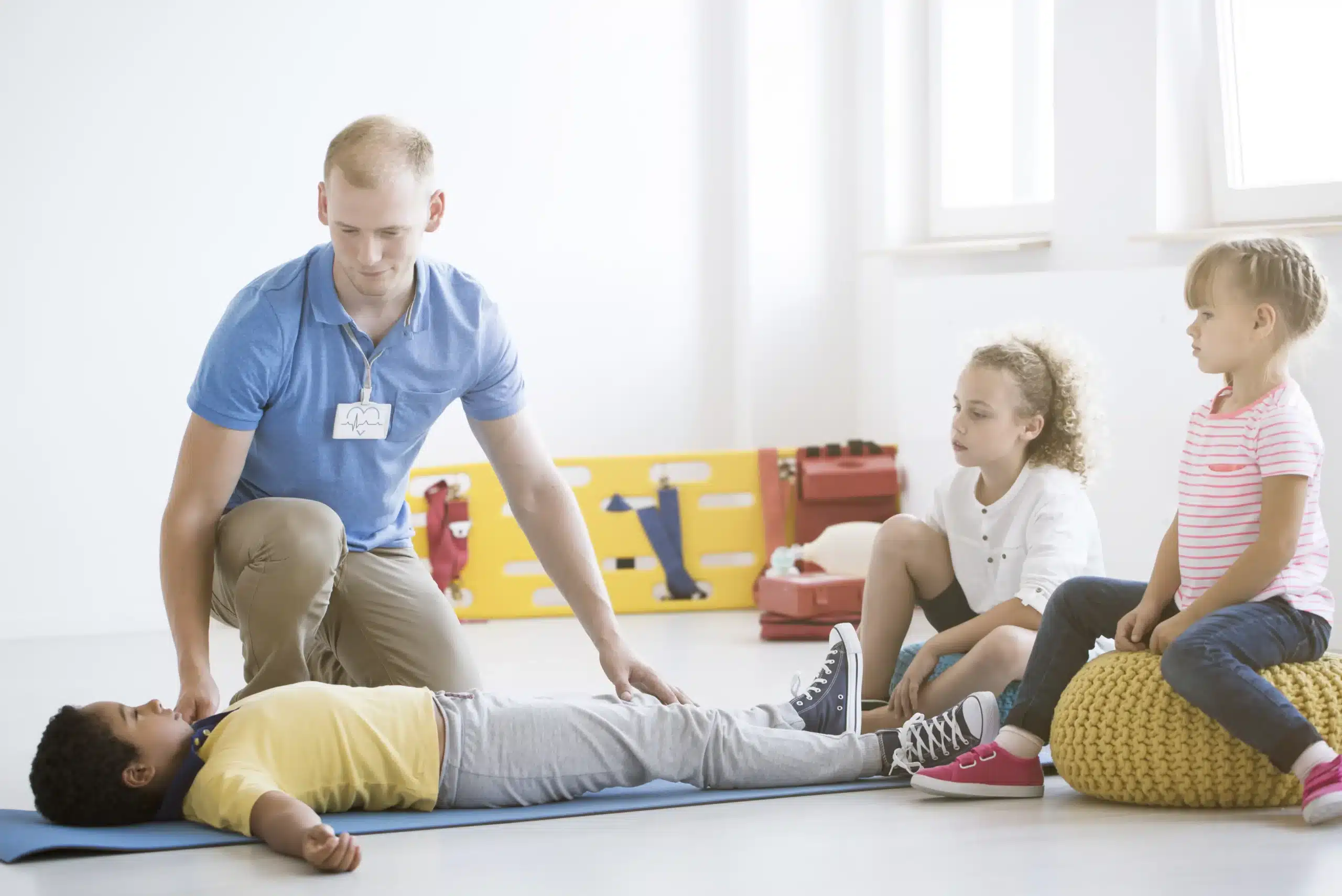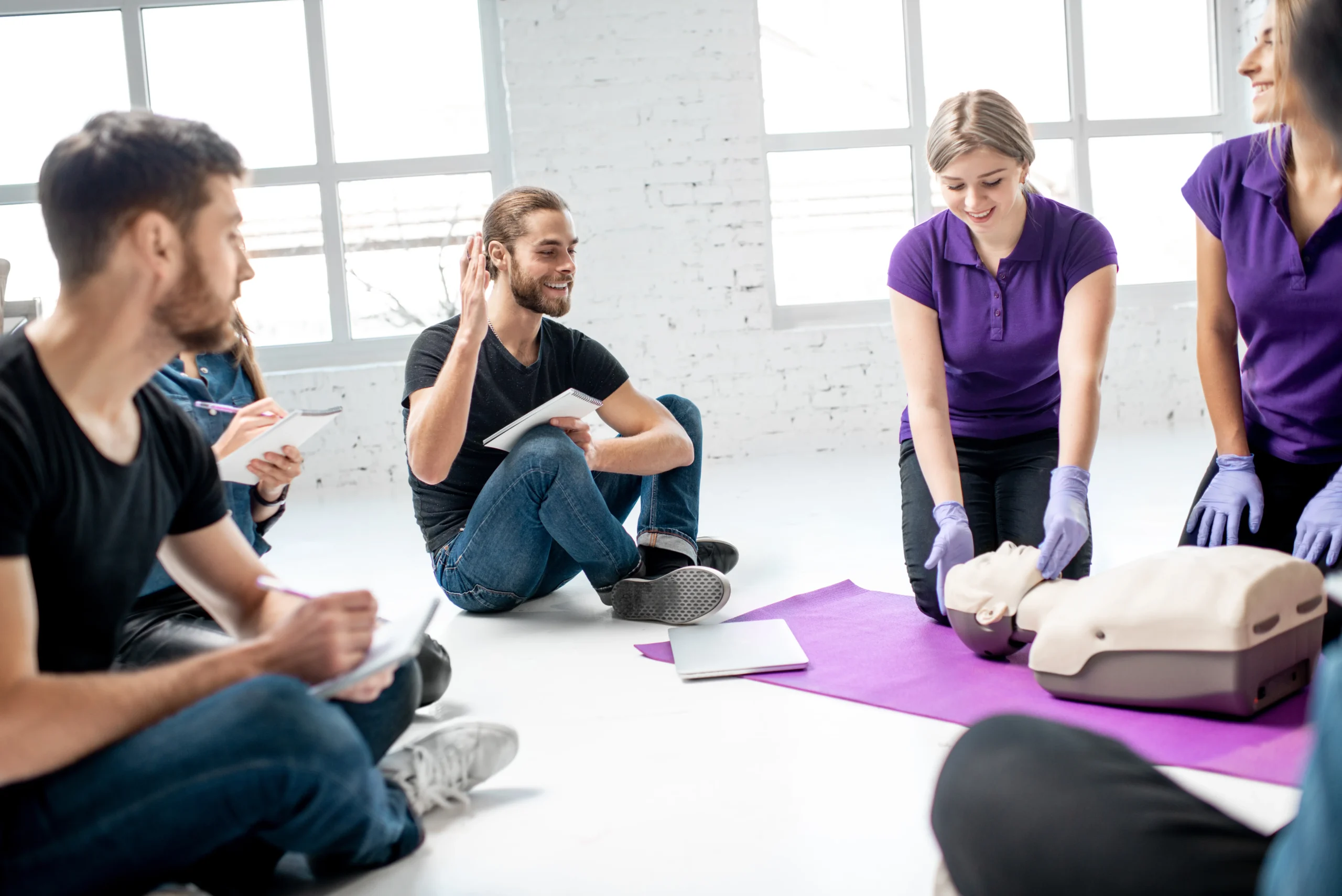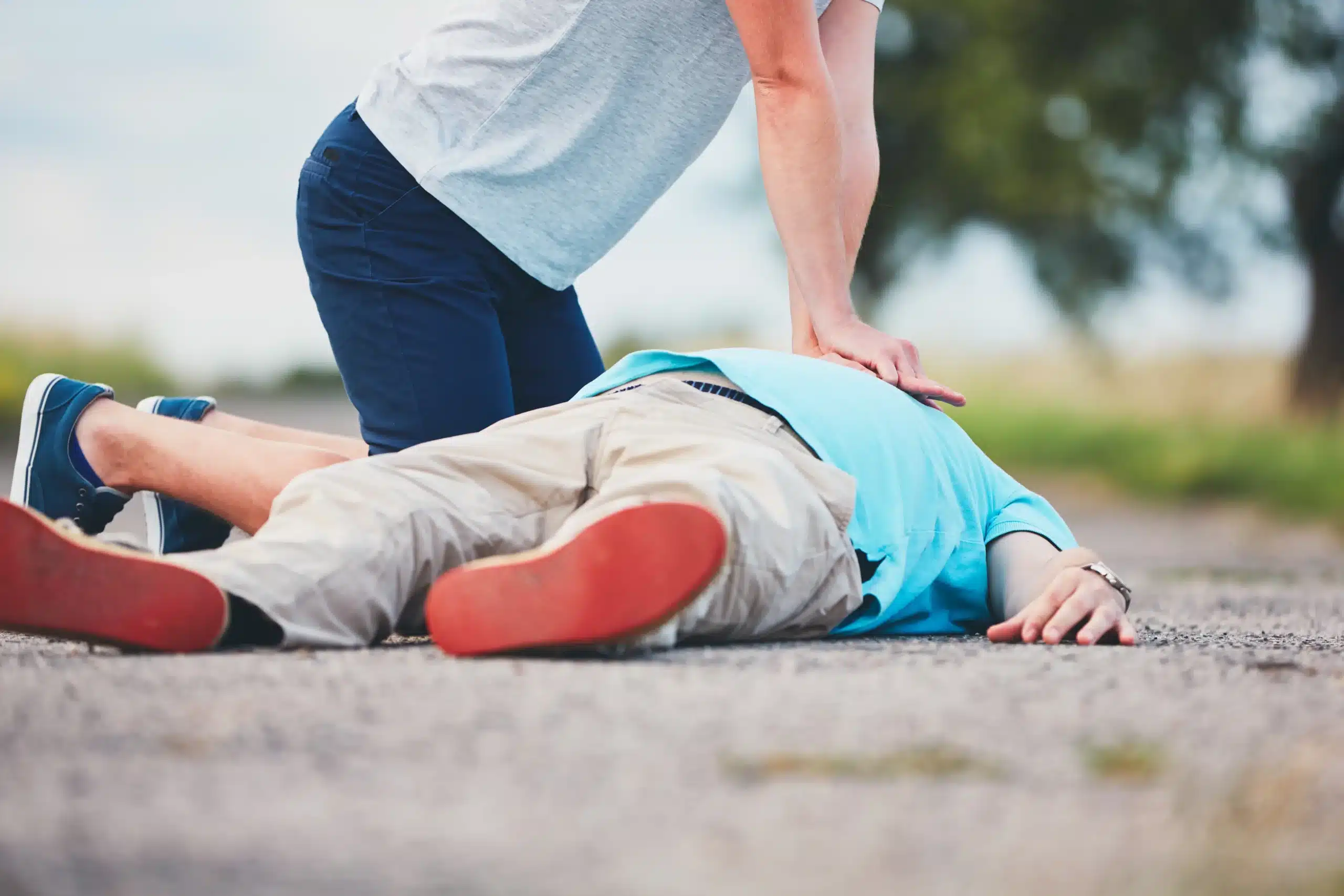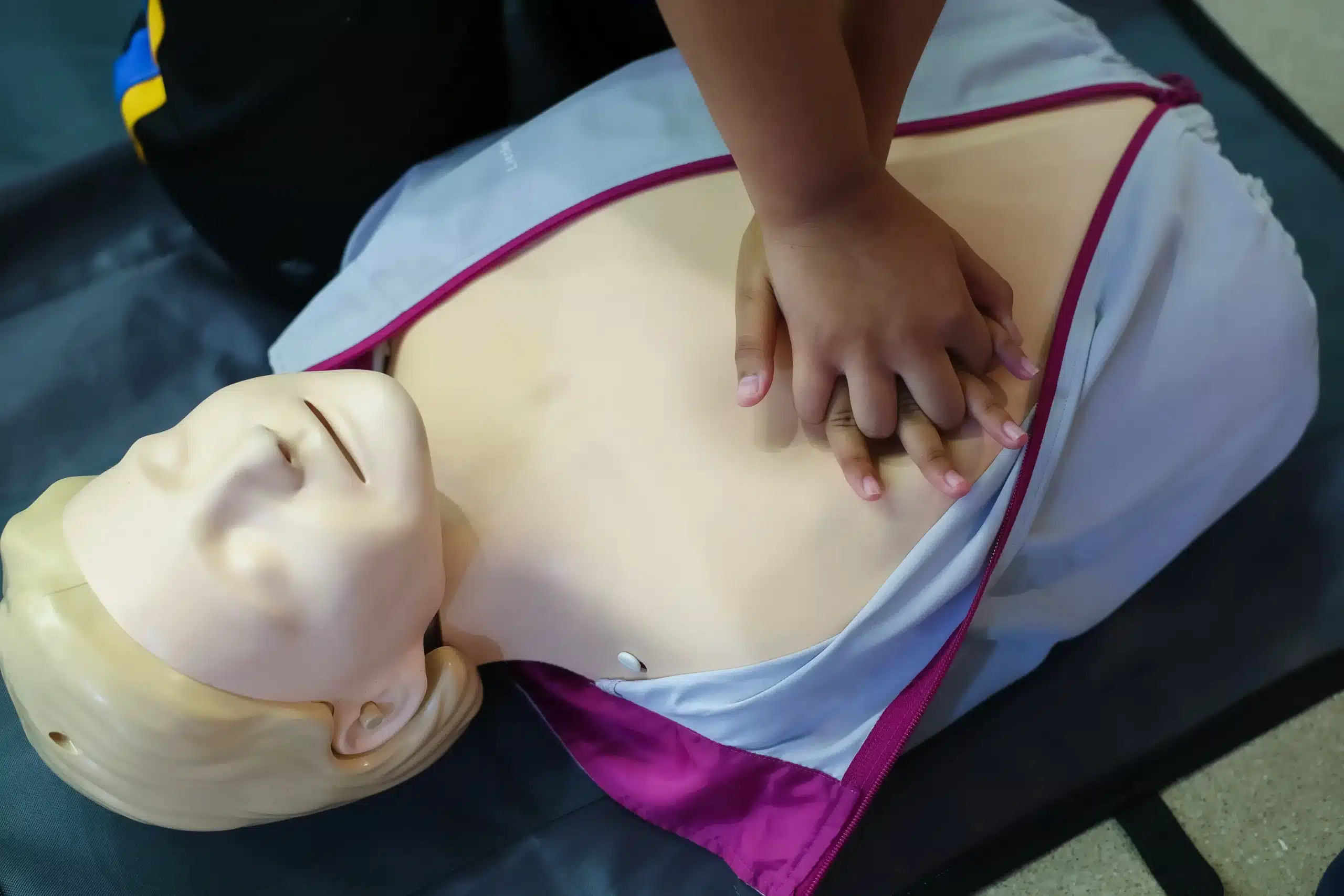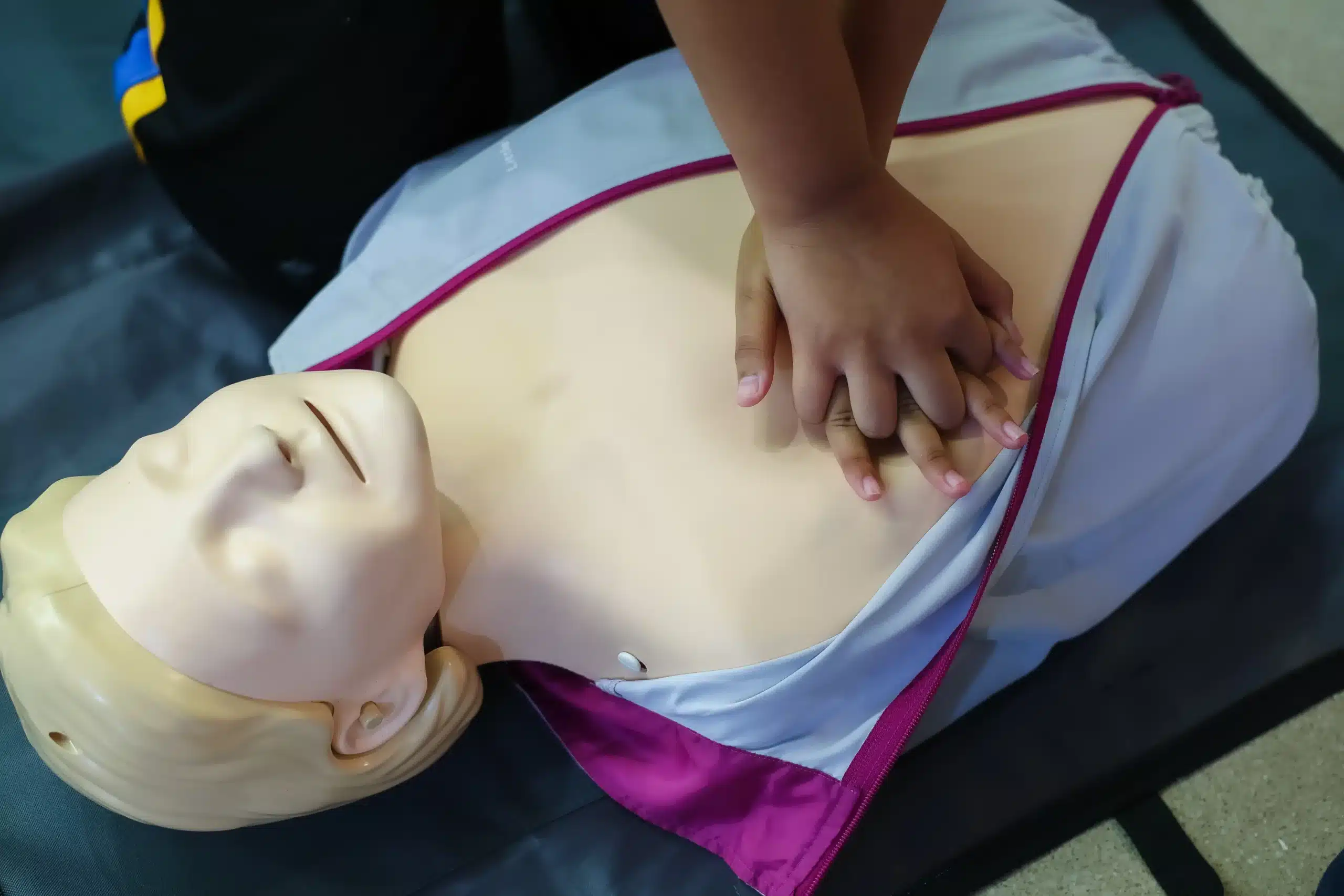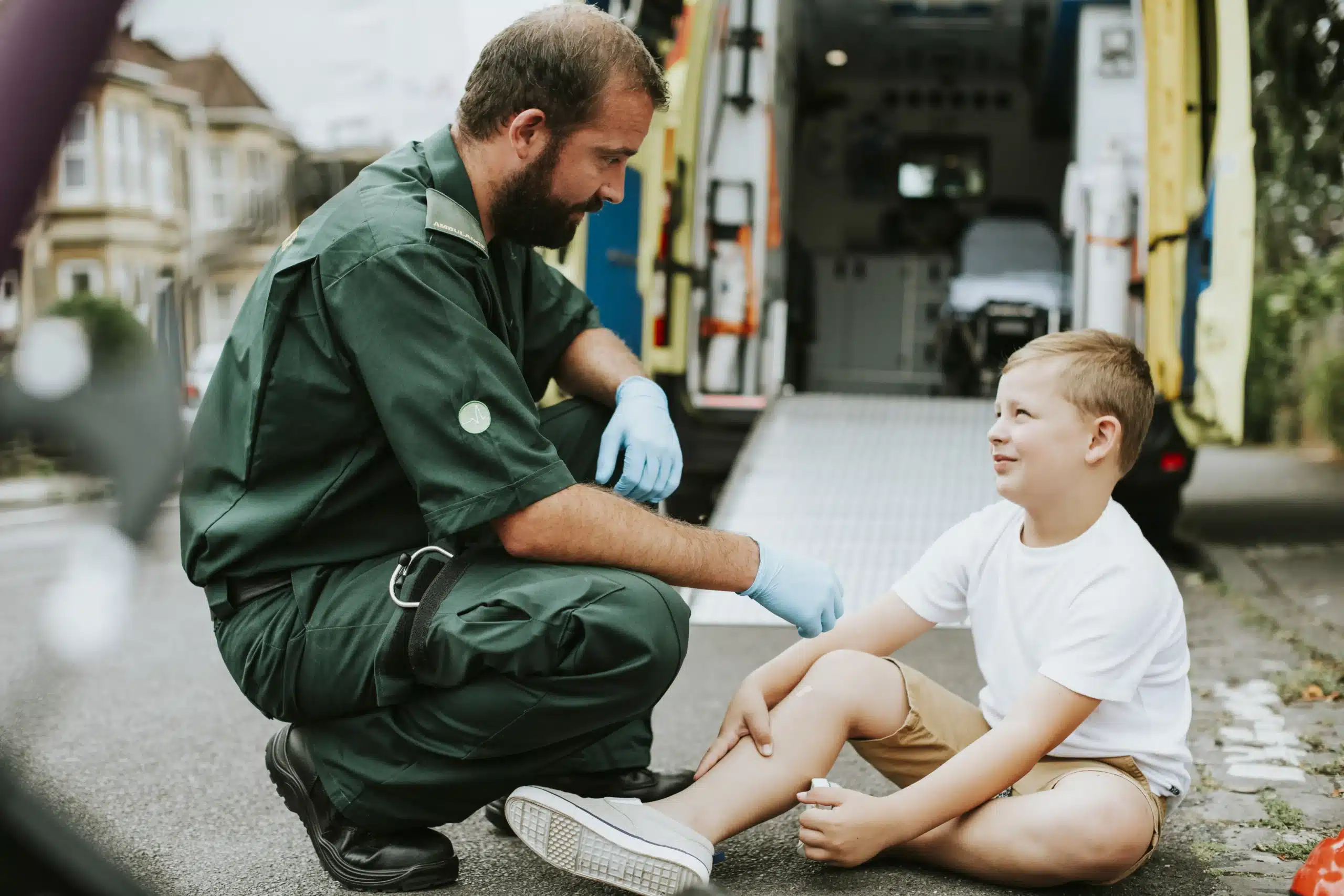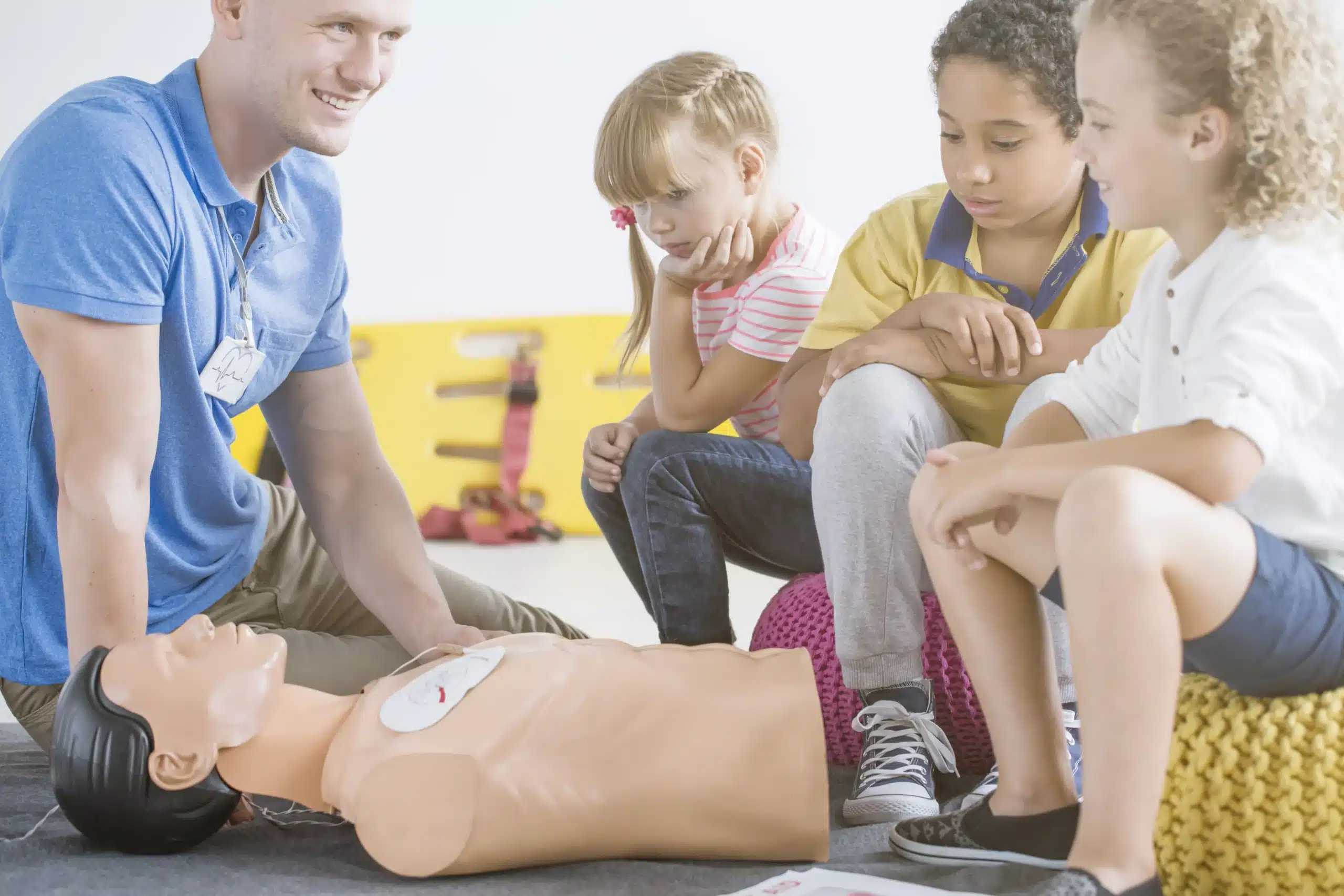Medical emergencies can happen anytime, anywhere. Would you know what to do? BLS training equips you with the skills and confidence to respond effectively in such critical situations. This guide explores the ins and outs of Basic Life Support (BLS) training, covering everything from the core skills taught to finding “bls training near me.” We’ll delve into the importance of BLS certification for various individuals, discuss different training formats, and provide practical tips for choosing the right course. We’ll also address common misconceptions and offer resources to help you maintain your skills and stay prepared.
Key Takeaways
- BLS certification empowers you to handle emergencies. It provides essential life-saving skills applicable to various situations, benefiting everyone, not just healthcare professionals.
- Finding the right BLS course is simple. Explore in-person, online, or blended learning options. Consider factors like cost, instructor credentials, and location when selecting a provider. Organizations like the AHA and Red Cross can help you find certified training.
- Maintaining your BLS skills is essential. Regular practice and staying updated on guidelines ensure you’re always prepared. Refresher courses and resources from organizations like the AHA help keep your skills sharp.
What is BLS Training & Why Do You Need It?
Knowing what to do in a medical emergency can make all the difference. Basic Life Support (BLS) training gives you the skills to respond effectively and potentially save a life. This section covers everything you need to know about BLS—what it is, why it matters, and who should get certified.
What is BLS (Basic Life Support)?
BLS training equips you with essential life-saving techniques, focusing on high-quality CPR and how to use an AED. It’s about more than just memorizing steps; it’s about building the confidence to act quickly and effectively when every second counts. The goal is to provide immediate care until professional medical help arrives. Think of it as the foundation for responding to cardiac arrest and other life-threatening emergencies. Learn more on our BLS training page.
Key BLS Skills
BLS certification goes beyond the basics of CPR. It covers a range of skills vital for managing emergencies, including how to open and maintain an airway and how to recognize the signs of a heart attack or stroke. It also emphasizes teamwork and clear communication in critical situations, especially for healthcare providers working in high-pressure environments. These skills are crucial for providing effective care and improving patient outcomes. For more information, see our guide for healthcare providers.
Who Needs BLS Certification?
While often associated with healthcare professionals, BLS certification is invaluable for anyone who wants to be prepared for an emergency. From teachers and coaches to security guards and office workers, having these skills can make a real difference. It’s also highly recommended for parents, caregivers, and anyone who regularly interacts with children or the elderly. BLS training empowers individuals to respond confidently to emergencies, regardless of their background. If you’re unsure whether BLS is right for you, this resource on BLS vs. ACLS clarifies the differences.
Common BLS Misconceptions
One common misconception is that BLS training is only for medical professionals. This isn’t true. Emergencies can happen anywhere, and having BLS training can equip anyone to provide immediate assistance before professional help arrives. Another misconception is that BLS certification is difficult to obtain. Our courses are designed to be accessible and engaging, making it easy for anyone to learn these vital skills. We even offer group discounts to make training more affordable. If you’re looking for BLS training near you, this guide can help you find the right course.
How to Find Great BLS Training Near You
Finding the right BLS training program is crucial for mastering these lifesaving skills. Here’s what to consider as you explore your options:
Evaluating Local BLS Providers
When selecting a BLS provider, think about factors like course format (online, in-person, or blended), cost, and the training center’s reputation. Do they offer the right learning environment for you? Check if the provider is affiliated with a nationally recognized organization like the American Heart Association or the American Red Cross. Reading reviews from past students can also give you valuable insights. Finally, consider the location and schedule—choose a training center that’s convenient and fits your availability.
Safety Training Seminars in Petaluma
For those in and around Petaluma, Rohnert Park, and Novato, Safety Training Seminars offers comprehensive American Heart Association certification courses, including BLS, ACLS, and PALS. They also provide RQI training, a resuscitation quality improvement program for healthcare professionals. Known for their low price guarantee and convenient location, Safety Training Seminars is a great option for local residents. You can find more information about their BLS certification course on their website. They also offer group discounts for businesses or groups of friends.
American Heart Association Training Centers
The American Heart Association (AHA) offers various BLS course options, including full classroom courses, blended learning (online coursework plus a hands-on skills session), and additional course materials. The AHA website provides a convenient search tool to locate certified training centers near you. This allows you to explore different learning formats and choose the one that best suits your needs and preferences.
Red Cross Training Locations
The American Red Cross also offers BLS training, specifically designed for healthcare providers. Their Basic Life Support for Healthcare Providers course focuses on responding to cardiac and breathing emergencies for adults, children, and infants. The Red Cross website has a class locator tool to help you find local training locations and available course dates.
Online BLS Training Options
Online BLS training is a convenient option for those with busy schedules or limited access to in-person classes. Reputable online providers offer comprehensive coursework covering essential BLS skills, such as high-quality CPR and AED usage. However, it’s important to remember that online BLS certification typically requires a hands-on skills session with a certified instructor to complete the certification process. Make sure any online BLS training you choose meets the requirements of your workplace or licensing organization. You can explore various online BLS courses through providers like My CPR Certification Online.
BLS Training: Formats, Costs & What to Expect
BLS training gives you essential life-saving skills, from CPR and using an AED to managing someone’s airway. Whether you’re a healthcare professional or not, BLS equips you to handle medical emergencies. Safety Training Seminars offers a range of American Heart Association (AHA) courses, including BLS certification, to get you prepared.
In-Person, Online, or Blended Learning?
You can find BLS training in several formats. In-person classes provide hands-on practice and direct interaction with an instructor. Online courses offer flexibility, letting you learn at your own pace from anywhere. Blended learning combines online learning with in-person skills sessions for a well-rounded approach. Safety Training Seminars offers various learning formats to fit your schedule and learning style.
Course Length & Time Commitment
BLS classes cater to both new and experienced learners, including those needing recertification. Expect courses to run between 2.5 and 4.5 hours. If you prefer independent study, the “Challenge” option lets you prepare on your own and then demonstrate your knowledge with a written exam and skills assessment. Check out our BLS certification page for more details.
Average BLS Course Costs
BLS course costs vary based on location, training center, and the type of certification. In California, you might find prices ranging from $50 to $150. Safety Training Seminars offers a low price guarantee, ensuring you receive high-quality training at a competitive price.
Group Discounts & Special Offers
Looking for training for your team? Check for group discounts. Safety Training Seminars frequently offers discounts and promotions on BLS certification courses, making it even more affordable to train your entire workplace. Contact us to learn about current offers and package deals for group training.
Get BLS Certified: Qualifications & Process
So, you’re ready to get BLS certified? Great! This section walks you through the process, from finding a qualified instructor to understanding what happens after you complete the course. We’ll cover everything you need to know to feel prepared and confident.
Instructor Credentials & Expertise
Choosing the right instructor is key to a positive learning experience. Look for instructors certified by a recognized organization like the American Heart Association (AHA). Experienced AHA-certified instructors bring a wealth of knowledge and practical skills to the classroom, ensuring you receive high-quality training. They can answer your questions thoroughly and provide personalized feedback during the hands-on portions of the course. Many training centers, like Safety Training Seminars, highlight their instructors’ credentials—it’s always a good idea to check these out. BLS is the required CPR certification level for many healthcare providers, first responders, and students in medical programs, so you want to make sure your training meets industry standards. Safety Training Seminars offers BLS training led by certified AHA instructors.
Steps to BLS Certification
Getting your BLS certification is typically a straightforward process. The American Heart Association offers a few different learning pathways. You can choose a traditional classroom course, a blended learning option (online coursework combined with an in-person skills session), or opt for additional course materials to supplement your learning. This flexibility allows you to choose the format that best suits your learning style and schedule. Regardless of the format you choose, the goal of BLS training is to give you the knowledge and skills to respond effectively in emergencies. It’s a concise and focused course designed to equip you with the essentials.
Certification Validity & Renewal
Once you’ve successfully completed your BLS course, you’ll receive a BLS Provider Course Completion Card. This card is your proof of certification and is valid for two years. The AHA recommends renewing your certification before it expires to stay up-to-date on the latest guidelines and techniques. Renewal courses are readily available, often with options for those nearing their expiration date. You can find renewal courses through providers like Safety Training Seminars or the Red Cross. Staying current with your BLS certification ensures you’re always prepared to provide effective assistance in critical situations.
Keep Your BLS Skills Sharp: Practice & Resources
Ongoing Practice & Skill Maintenance
BLS training equips you with life-saving skills like high-quality CPR and AED use. But like any skill, regular practice is key to maintaining proficiency. Think of it like learning to drive—you wouldn’t expect to ace a driving test years after your last time behind the wheel. Similarly, consistent practice ensures you can confidently and effectively perform BLS in a real emergency. Set aside time each month to review key procedures. Even simple refreshers can dramatically improve your recall and reaction time when it matters most.
Resources & Support After Training
After completing your BLS certification course, staying up-to-date on the latest guidelines and best practices is crucial. The American Heart Association (AHA) offers various resources, including updated course materials and refresher courses, to help you maintain your skills. Explore options like full classroom courses, blended learning (combining online modules with hands-on skills sessions), or purchasing additional course materials directly through the AHA. Remember, the goal of BLS is to give you the knowledge and confidence to respond effectively in emergencies, so ongoing learning is essential.
Local BLS Training Providers
Finding the right BLS training provider is an important step. Here are a few options to consider:
Safety Training Seminars
Safety Training Seminars offers comprehensive BLS courses in Petaluma, Rohnert Park, and Novato, CA, covering essential skills such as CPR, AED usage, and first aid. They also provide the AHA’s RQI program, a resuscitation quality improvement program designed for healthcare professionals. Check their website for course schedules and their low price guarantee.
American Heart Association
The AHA sets the standard for CPR and ECC guidelines. They offer a range of BLS courses that incorporate the latest scientific updates, ensuring you receive the most current and effective training. You can locate AHA-certified training centers and courses on their international website.
Red Cross
The Red Cross is another well-respected provider of BLS training for healthcare providers. Their courses cover essential life support techniques for adults, children, and infants. Find a Red Cross training location near you to explore course options and schedules.
Local Hospitals & Medical Centers
Many hospitals and clinics offer BLS certification courses for both their staff and the wider community. Check with your local hospitals or medical centers to see if they provide BLS training.
Community Colleges
Community colleges often offer BLS training as part of their health sciences programs, making it an accessible option for many. Contact your local community college to inquire about BLS course availability and enrollment.
Related Articles
- Complete Guide to Basic Life Support (BLS) in Rohnert Park
- BLS Renewal in Novato: Your Complete Guide – Petaluma CPR Classes
- HeartCode BLS in Rohnert Park: Your Certification Guide – Petaluma CPR Classes
- Debunking Common CPR Myths and Saving Lives
- BLS Classes in Petaluma: Your Certification Guide – Petaluma CPR Classes
Frequently Asked Questions
Is BLS certification only for healthcare professionals? Not at all! While it’s certainly a vital certification for doctors, nurses, and EMTs, BLS training is beneficial for anyone. Teachers, coaches, parents, caregivers, and even office workers can use these skills to respond effectively in emergencies. Having more people trained in BLS simply means more people equipped to help when it matters most.
What’s the difference between online BLS training and in-person classes? Online BLS training offers flexibility, allowing you to learn the material at your own pace and on your own schedule. However, you’ll still need an in-person skills session to complete your certification. In-person classes provide immediate feedback from an instructor and the opportunity to practice your skills in a real-time environment. Both options lead to the same certification – the best choice depends on your learning style and schedule.
How long does BLS certification last, and how do I renew it? BLS certification is typically valid for two years. Renewal is straightforward and involves taking a refresher course. This ensures your skills and knowledge are up-to-date with the latest guidelines. Many organizations, including Safety Training Seminars and the Red Cross, offer renewal courses.
How much does a BLS course cost, and are there any discounts available? The cost of a BLS course can vary depending on the training provider and location. It’s always a good idea to compare prices and check for discounts. Many providers, like Safety Training Seminars, offer group discounts for businesses or groups of friends. Don’t hesitate to contact the training center directly to inquire about special offers or package deals.
What if I’m already CPR certified – do I still need BLS training? BLS training often includes CPR certification as a core component, but it goes beyond basic CPR. It covers a broader range of skills, including using an AED, airway management, and recognizing the signs of various medical emergencies. If your current CPR certification doesn’t encompass these elements, BLS training would be a valuable addition to your skillset.
